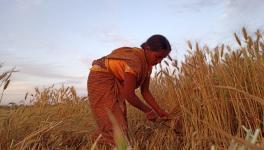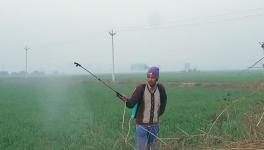PMFBY: Amid Irregularities, Dues Worth Rs 5,000 Crore for Kharif 2018 Still Unpaid

Disparities are constantly being reported in the Centre’s one of the most ambitious projects: Pradhan Mantri Fasal Bima Yojana (PMFBY). Latest reports say that 50% of the total dues are being paid only in 30-45 districts and dues worth more than Rs 5,000 crore still remain unpaid.
According to a report, farmers had made claims worth Rs 14,813 crore for the last Kharif that ended in December 2018. Of this, only Rs 9,799 crore have been paid till July this year. As per the PMFBY guidelines, dues are supposed to be cleared within two months after the end of the harvest. In accordance with this, dues should have been cleared by February this year.
“During the talks between the state governments and insurance companies, it was informed that there is a lot of disparity in payment of claims and a total of nearly 50 percent claims have been paid in only 30-45 districts. Opinion has been sought from all stakeholders or parties to gather information about the districts where most claims are being paid,” states the document accessed by The Wire through a Right to Information (RTI) appeal.
CEO of PMFBY and joint secretary in the Ministry of Agriculture, however, said that the investigation has started along with the states to understand why most payments are being made in particular areas. Though these areas are facing more crop loss, it is happening frequently.
Read More: PMFBY: Farmers Quitting Scheme But Premium Collection Rises
The RTI reply further reveals that the cover of this scheme in Northeastern states is very low since there is no provision for identification of beneficiaries cultivating community-owned land under the scheme.
Meanwhile, the Union Agriculture Ministry has put the onus of delay of payments on the states. The ministry has also argued that the delay in estimating the value of crop loss leads to delay in paying the dues to the farmers. But various reports from different parts of the country clearly show the apathy of insurance companies.
One of the insurance companies, IFFCO Tokio, which covered red gram crop (tur) in Kharif season 2018, has not settled the claims so far. In Parbhani district alone—located in drought-prone Marathwada region of Maharashtra—about 47,000 farmers are yet to receive the payment against their claims for the season under PMFBY. Soybean farmers have also faced this issue.
Above all, irregularities have been reported in crop cutting experiments (CCE) in various places during the 2018 Kharif season. CCE, as the name indicates, is an experiment done in a sample plot. The experiment refers to the process of harvesting the crop, threshing and winnowing it and then weighing it and from this, the estimated yield for the whole sown area is projected.
CCEs are done in the presence of the district officials, farmers, and insurance company representatives; it is the basis of the claim under the PMFBY.
Read More: About 47,000 Farmers Yet to Receive Claims for Kharif 2018 in Parbhani District
In Parbhani, the yield data was obtained for the 2018 Kharif season from the SAO (Superintendent Agriculture Office), twice—first time on March 19 this year and for the second time on May 4. And it was observed that the yield data provided by the SAO in May was significantly higher than what was shown initially. This clearly raises the question of how the yield data changed.
In case of tur, the yield—as captured in CCE documents in Jamb mandal (under Parbhani taluka) and given by SAO on March 19—was 410.125 kg/hectare. But in the data provided by the office in May, the yield for the crop in Jamb was reported to be 471.13 kg/hectare. The yield for Pedgaon Mandal—which was originally shown as 41 kg/hectare—was later changed to 205 kg/hectare.
As CCE is calculated once at the end of the season before the farmers harvest their crop, how did it vary at two different points?
In this financial year, companies, who are part of the PMFBY, have been considering the option of opting out from the scheme, pointing to the losses. ICICI Lombard General Insurance has already stepped out from the scheme. As per the government data, the gross premium under the scheme in 2018-19 is estimated to be Rs 20,923 crore and the claims amounted to Rs 27,550 crore.
It is also important to note that the number of farmers covered by the insurance scheme has gone up only by 0.42%. However, the premium to insurance companies has seen a rise of 350%. Before the launch of PMFBY, in 2015-16, 48.55 millions farmers across the country were covered in the existing crop insurance schemes. But after the introduction of PMFBY, by the end of 2017-18, the number of farmers covered by the crop insurance had increased by only two lakh.
Comparing the data for the years 2016-2017 and 2017-18, there is a decline in the number of farmers who are enrolled under the scheme. In 2016-17, the total number of farmers under PMFBY was 57.25 million; whereas, in 2017-18, it was 48.76 million. But the premium collected, which was Rs 5,614 crore in 2015-16, had increased to Rs 22,362 crore in 2016-17 and 25,046 crore in 2017-18.
Read More: PMFBY: 40% Claims for Kharif Season Unpaid
Get the latest reports & analysis with people's perspective on Protests, movements & deep analytical videos, discussions of the current affairs in your Telegram app. Subscribe to NewsClick's Telegram channel & get Real-Time updates on stories, as they get published on our website.
























